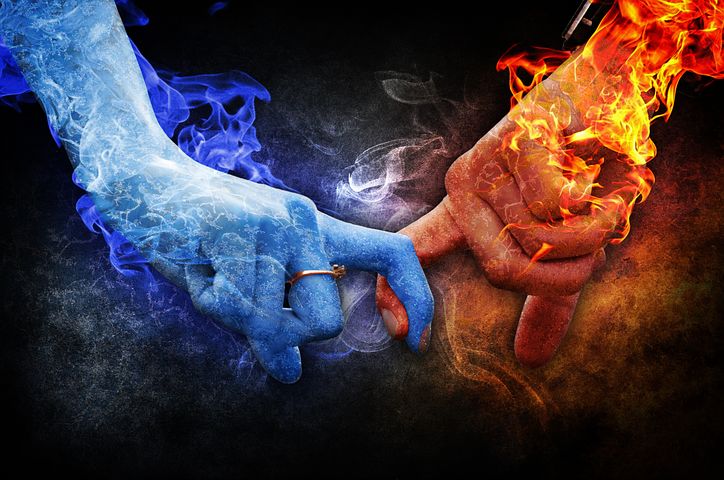How I work
Working with you towards wholeness, connection & transformation
Everyone is different. There is no one-size-fits-all approach to therapy that works for all. Rather than being focused upon giving you some diagnosis, I structure my sessions around meeting you and your needs. This style of therapy is called person-centred therapy.
Generally, I try to work on three levels:
- Deepening embodied attachment security and nervous system regulation
- Strengthening connection
- Fostering meaning and purpose
I will address your main areas of concern by asking questions and listening to you talk. We might do exercises around awareness, feeling, breath or movement and we may work with emotions or attachment styles to uncover the patterns that shape your life. We may explore ways for you to feel safe and secure in yourself and your relationships, especially if there is any history of trauma.
For couples therapy, we may engage in activities such as roleplays or dialogues, so that you can explore your relationship patterns in-depth and imprint new ways of relating. We draw upon my training in PACT couples therapy, EFT (Emotion Focused Therapy) . Gottman Couples Theraopy and family and systems therapy and holistic counselling in addition to somatic therapy. As we always work collaboratively, I only use techniques after prior discussion and with your consent.
A holistic approach
People come with problems they want resolving; however, upon deeper reflection, these problems reveal themselves as symptoms of deeper issues. I work with symptoms and the cause because nothing occurs in isolation.
My practice also has a strong body-oriented approach. This does not mean I use touch in my sessions. Instead, I understand there is a deep connection between body, mind and emotions. The body is inseparable from our feelings and thoughts, and the issues that play out in our lives and relationships usually also affect us on a physical level.

As such, depending on where you are at in your journey, we may work on developing embodiment and building your internal ‘map’. When we can feel and understand our inner landscape, it’s easy to identify stress and triggers before they arise, and learn how to avoid them before they hijack our lives and relationships.
Although I am a qualified bodyworker, my sessions never involve touch unless explicitly agreed upon by us both.

Embodied attachment security and nervous system regulation

Deep connection

Profound meaning
What is embodiment and attachment security? Why does it matter?
“There is more wisdom in your body than in your deepest philosophy”– Friedrich Nietzsche
More than anything else we need to feel safe in our relationships. We experience that sense of safety first in our bodies, so developing embodied awareness is an improtant element of therapy.
To be embodied means to have moment-to-moment awareness of ourselves in the physical world as physical beings. There are many reasons why this is important:
- It helps us feel more alive
- We possess more presence regarding ourselves and the world
- It reduces stress while also increasing our capacity to tolerate further stress
- We become less reactive and more responsive to stimuli
- We are better able to process and integrate past experiences and trauma
- We receive more information about our internal and external environments and make better decisions
- Our lives feel richer and more fulfilling
Attachment is the way in which we seek security in relationships with other people. Sometimes we seek security by pulling away and soothing ourselves and other times we may need reassurance from partners or family. From childhood, we observe how responsive our caregivers are to us when we are distressed. That responsiveness informs our attachment system and the degree we seek closeness from other people in relationships and in times of stress.
Nervous system regulation is how we stay calm and centred, even in the presence of threat or danger. When we become dys-regulated, we enter protective states that interfere with closeness and relationship.

In couples therapy, we may work with co-regulation, helping each other’s nervous system work together to prevent tension and avoid situations where it may spiral into arguments.
What is trauma, and why does it matter?
Trauma is any event or experience that overwhelms your ability to cope with it (van der Kolk, 2015). Trauma may occur from one large, single incident or many smaller, re-occuring incidents. Trauma may also be more complex over time.
Our bodies have natural ways of processing and discharging negative experiences, but trauma becomes stuck in the body and unable to be released when these natural ways are overwhelmed. All of us carry trauma to a certain extent, but as we all have different thresholds and ways of coping, it affects us differently. At a base level, trauma affects our instinctive responses towards life (Levine 1997).
Serious and unresolved trauma, however, can create severe impacts in our lives. If untreated, traumatic stress can:
- Lead to chronic stress, anxiety and panic
- Play out in our relationships through repeated patterns and cycles of behaviour
- Lead to numbness, freezing or an inability to form deep relationships
- Cause inflammation, which may result in many kinds of inflammatory or autoimmune conditions (such as IBS, coeliac disease, MS, Parkinsons and more)
In working with trauma, we never go into the story of what happened. Going back into the story can often make things worse. Instead, therapy good trauma therapy focuses on allowing you to integrate the trauma safely, in small degrees, by activating your body’s natural trauma processing responses.
Why is connection important?
We are biologically wired for connection. Research shows that our social environment has a profound effect on us, and when these are affected, it can have long-term effects upon our mental and physical health.
A significant cause of distress in our lives is loneliness and disconnection. In some Eastern cultures, loneliness is considered a disease. The West is only starting to catch on to this. Loneliness doesn’t mean physical loneliness; it means disconnection.
People come to therapy because they feel disconnected and estranged from their partners or family members or adrift and unrooted in the world around them. Quite often, people feel disconnected from their own feelings, thoughts, and bodies.
Disconnection is a natural response to difficulty, hurt, and trauma. Rupture of some kind is inevitable in life; so long as we can repair. Some people, however, need support and tools to repair that disconnection.

Why do we need meaning?
Humans are meaning-making animals. We make meaning through the stories we tell ourselves about our world and who we are. These stories shape our personality, define our lives, and infuse our every belief. Yet, very often, we are unconscious of these stories and how they affect us.
When we identify our stories, we have the power to change them. For those who have felt their stories to be a prison sentence or a life’s burden, this can provide an incredible sense of liberation and empowerment.
“You either walk inside your story and own it or you stand outside your story and hustle for your worthiness.”– Brené Brown
